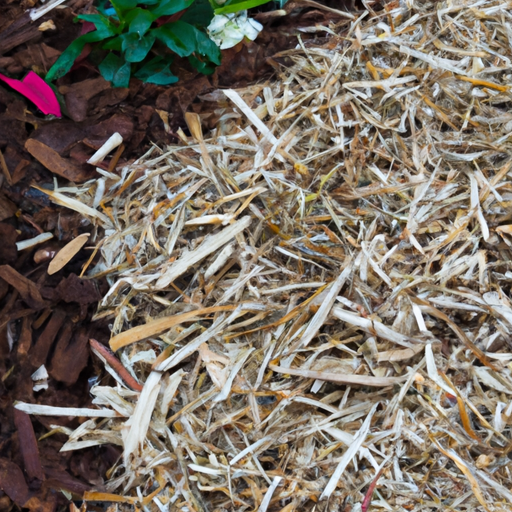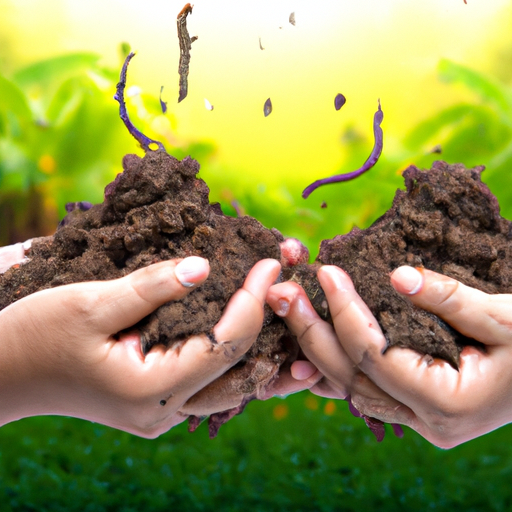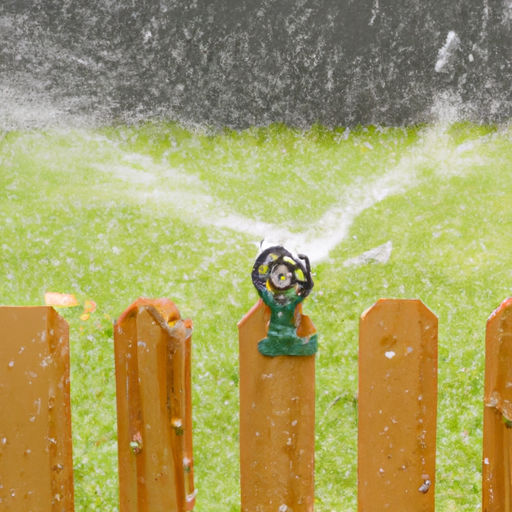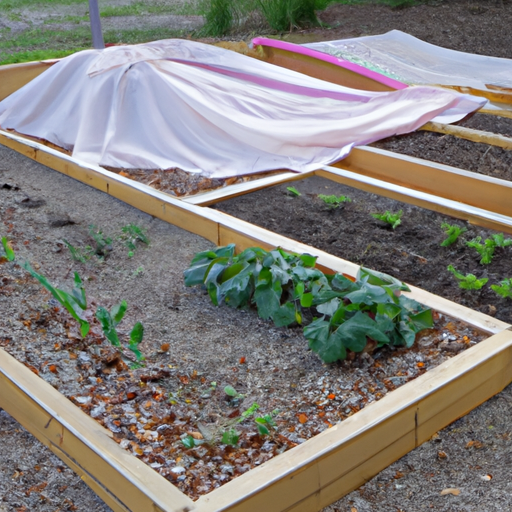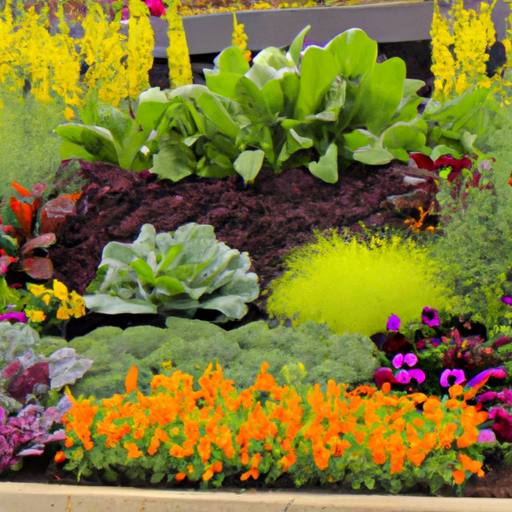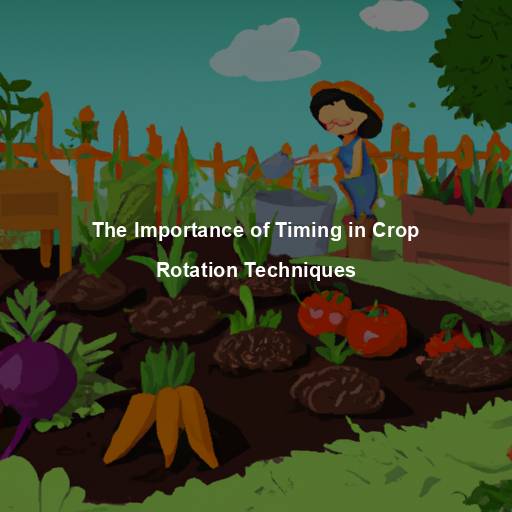Hey there, fellow gardeners! As a Master Gardener with years of experience in organic farming, I know firsthand the joy and satisfaction that comes from growing your own produce.
But when it comes to harvesting your crops, timing is everything – pick too soon or too late, and you’ll be left with underripe or overripe fruits and vegetables that won’t taste their best.
That’s why today we’re going to talk about how to tell when your organic produce is ready to harvest. Whether you’re new to gardening or just looking for some tips to fine-tune your skills, this guide will give you all the information you need to ensure that your fruits and veggies are picked at peak ripeness for maximum flavor and nutrition.
So grab your trowel and let’s get started!
Understanding The Ripening Process
As a Master Gardener, it is important to understand the chemical changes that occur during the ripening stages of organic produce.
Ripening can be affected by various factors such as temperature, humidity, and light exposure.
One major factor affecting ripening is ethylene production – a natural plant hormone that triggers fruit and vegetable maturation.
Understanding these processes will help you determine when your produce is ready to harvest.
Keep an eye on color changes, texture, and aroma as they are all signs of ripeness.
Remember that different fruits and vegetables have varying optimal harvesting times so consult with reliable sources or experts in your area for specific guidelines.
Monitoring For Visual And Tactile Clues
Understanding the ripening process is crucial in determining when your organic produce is ready to harvest. However, it’s not just about knowing the science behind it; monitoring for visual and tactile clues can also help you determine if your fruits and vegetables are at their peak quality.
Here are some harvesting techniques and quality indicators to keep in mind:
– Check color: Depending on the plant, a change in color can be an indicator of ripeness. For example, green tomatoes will turn red once they’re ripe.
– Feel the texture: Many fruits and vegetables will soften as they ripen, so gently squeeze them to see if they give slightly.
– Smell test: Some plants have a distinct aroma when fully ripe, such as melons or strawberries.
– Taste test: This might seem like an obvious one but sampling a small piece of produce can tell you whether it’s too tart or too sweet.
– Look at the stem: If the stem starts to shrivel or dry out around where it meets the fruit/vegetable, that may indicate that it’s time to harvest.
By paying attention to these factors, you’ll be able to confidently pick your organic produce at its prime. Remember that different types of produce require different harvesting techniques and have unique quality indicators – so do your research!
Using Tools To Check For Maturity
Now that you have a basic understanding of how to tell when your organic produce is ready to harvest, it’s time to incorporate some tools into your gardening routine. By utilizing the right instruments, you can ensure that your crops are at their peak flavor and maturity before picking them. One essential tool in any gardener’s arsenal is a refractometer, which measures the sugar content in fruits and vegetables. A high brix reading means that the produce has reached its optimal ripeness and will be sweeter and more flavorful than if picked too early. Another useful instrument is a soil moisture meter, which helps monitor water levels in the ground. Adequate soil moisture ensures healthy plant growth and allows for proper nutrient absorption. Additionally, checking pH levels with a soil tester kit can help determine if your plants are receiving adequate nutrients from the earth. It’s important to check these levels regularly as they affect both crop yield and quality.
| Tool | Purpose | How To Use |
| ————- |:————-:| —–:|
| Refractometer | Measures sugar content in fruits & veggies | Squeeze juice onto prism end; look through eyepiece for reading |
| Soil Moisture Meter | Monitors water levels in soil | Insert probe into ground at root level; read display for results |
| Soil Tester Kit | Checks pH Levels | Take sample of soil; add testing solution & compare color change against chart |
Incorporating these tools into your gardening practice will allow you to make informed decisions on when each crop is ready for harvest while ensuring maximum flavor and nutrition. Remember to also keep an eye on factors such as weather conditions, pests, and disease management throughout the growing season to optimize yields. Happy harvesting!
Considering Environmental Factors
When it comes to harvesting your organic produce, it’s important to consider the environmental factors that may affect its growth.
One of these factors is soil composition, as different types of plants thrive in different types of soil. Make sure you understand the needs of each plant and how they relate to the quality of your soil.
Additionally, weather patterns can impact when your produce is ready for harvest. For example, some crops need a certain amount of rainfall or sunlight to reach their full potential. Keep an eye on local weather forecasts so you can plan accordingly.
By taking into account both soil composition and weather patterns, you’ll be able to determine when your organic produce is at its peak ripeness and ready for picking without any guesswork involved.
Tips For Storing And Preserving Your Harvested Produce
As a Master Gardener, I know that harvesting your own produce is one of the most satisfying experiences in gardening. It’s like finding treasure after months of hard work! But now comes the challenge: how do you preserve and store your bounty so it lasts as long as possible? Don’t worry, there are plenty of storing techniques and homemade preservatives to help keep your harvested produce fresh and delicious for weeks or even months to come.
Here are three tips to get you started:
– Use proper storage containers: Whether it’s plastic bags, glass jars or reusable food containers, make sure they’re clean and dry before filling them with your harvest. This will prevent moisture buildup which can lead to mold growth.
– Store at the right temperature: Different fruits and vegetables require different temperatures for optimal storage. For example, root crops like potatoes and carrots prefer cooler temperatures while tomatoes need room temperature conditions. Do some research on what temperature range suits each crop best.
– Make homemade preservatives: Instead of resorting to chemical-laden preservatives from the store, try making your own natural ones at home using vinegar, salt or sugar. These not only extend shelf life but also add unique flavors to your produce.
By following these simple tips, you’ll be able to enjoy the fruits (and veggies) of your labor for much longer than you thought possible. Happy preserving!
Frequently Asked Questions
What Are Some Common Signs That Indicate When Organic Produce Is Overripe Or Past Its Peak Freshness?
As a Master Gardener, it’s important to know when your organic produce is at its peak freshness.
One way to determine this is by checking for ripeness indicators such as color and texture.
Overripe or past-their-peak fruits and vegetables can also have blemishes or soft spots.
Harvesting techniques are crucial in ensuring that you pick the produce at the right time to maximize flavor and nutrition.
It’s essential to regularly inspect your plants and harvest them as soon as they reach maturity.
By paying attention to these details, you’ll be able to enjoy healthy and delicious organic produce from your garden all season long.
How Can You Determine The Optimal Time For Harvesting Produce That You Plan To Store Or Preserve For Later Use?
As a Master Gardener, one of the most important skills to master is pre-harvest assessment.
To determine the optimal time for harvesting produce that you plan to store or preserve for later use, ripeness detection techniques are key.
Look for signs such as color changes, firmness, and sweetness levels.
For example, if you’re picking tomatoes, they should be red (or their specific ripe color), but not too soft when squeezed.
As for fruit trees, gently tug at a piece of fruit; it should come off easily without damaging the branch.
By using these methods and taking into account your own experience with specific plants, you can ensure maximum flavor and nutrient content in your harvests.
Are There Any Specific Types Of Produce That Require Different Harvesting Techniques Or Considerations?
Harvesting techniques can vary depending on the type of produce you are growing, as certain crops require specific methods for optimal harvest.
For example, fruits like apples and pears should be picked when they are mature but not fully ripe, while tomatoes should be harvested when they are fully ripened on the vine.
Seasonal variations also have an impact on harvesting times, as some vegetables like carrots and parsnips can be left in the ground until after frost to enhance their flavor.
Storage considerations and preservation methods also play a role in determining when to harvest your produce, as certain fruits and vegetables may need extra time on the plant to develop higher sugar content or better texture for storage purposes.
As a Master Gardener, it’s important to research each crop individually before harvesting to ensure maximum quality and yield.
How Can You Ensure That Your Organic Produce Is Free From Pests, Diseases, Or Other Contaminants Before Harvesting?
Ah, pest management and soil preparation – the two things that make organic gardening such a delight!
Of course, nothing beats the satisfaction of harvesting your own produce. But before you start dreaming about biting into a crisp apple or slicing through juicy tomatoes, let’s talk about ensuring that your organic bounty is free from pests, diseases, or other contaminants.
As any Master Gardener will tell you, prevention is key. So when it comes to pest management, be sure to choose natural options like companion planting and crop rotation. And don’t forget to prepare your soil well by adding compost and other organic materials to boost its health and fertility.
With these strategies in place, you can rest easy knowing that your harvest will be as healthy and contaminant-free as possible.
What Are Some Best Practices For Preparing And Maintaining Your Garden Or Farm To Maximize The Quality And Quantity Of Your Organic Produce Harvest?
To maximize the quality and quantity of your organic produce harvest, it’s important to implement best practices for preparing and maintaining your garden or farm.
Composting benefits are essential for creating healthy soil that promotes plant growth and minimizes disease risk.
Crop rotation techniques can also help prevent pests and diseases from building up in the soil over time. Consider planting different crops each season to reduce the chance of specific pests or diseases becoming a problem.
Additionally, be sure to regularly weed, water, and monitor your plants for any signs of trouble.
By following these simple steps, you can ensure a bountiful harvest of high-quality organic produce year after year!
Conclusion
In conclusion, as a Master Gardener, I highly recommend taking the time to properly observe and assess your organic produce before harvesting. Look for signs such as color changes, firmness, and aroma to determine peak freshness. Be sure to harvest at the optimal time for storage or preservation purposes.
Remember that different types of produce may require specific techniques or considerations when it comes to harvesting. Take care to ensure that your plants are free from pests, diseases, and other contaminants before harvesting.
And always maintain best practices in preparing and maintaining your garden or farm throughout the growing season.
So if you’re looking for an abundant harvest of high-quality organic produce, don’t skimp on the attention to detail. Follow these tips and tricks, stay informed about current gardening trends and innovations (like hydroponics!), and enjoy the fruits (and vegetables!) of your labor all year round!

